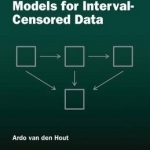Multi-State Survival Models for Interval-Censored Data
BookThis item doesn’t have any media yet
2016 | Philosophy, Psychology & Social Sciences
Multi-State Survival Models for Interval-Censored Data introduces methods to describe stochastic processes that consist of transitions between states over time. It is targeted at researchers in medical statistics, epidemiology, demography, and social statistics. One of the applications in the book is a three-state process for dementia and survival in the older population. This process is described by an illness-death model with a dementia-free state, a dementia state, and a dead state. Statistical modelling of a multi-state process can investigate potential associations between the risk of moving to the next state and variables such as age, gender, or education. A model can also be used to predict the multi-state process. The methods are for longitudinal data subject to interval censoring. Depending on the definition of a state, it is possible that the time of the transition into a state is not observed exactly. However, when longitudinal data are available the transition time may be known to lie in the time interval defined by two successive observations. Such an interval-censored observation scheme can be taken into account in the statistical inference.
Multi-state modelling is an elegant combination of statistical inference and the theory of stochastic processes. Multi-State Survival Models for Interval-Censored Data shows that the statistical modelling is versatile and allows for a wide range of applications.
Related Items:
| Published by | Taylor & Francis Inc |
| Edition | Unknown |
| ISBN | 9781466568402 |
| Language | N/A |
Images And Data Courtesy Of: Taylor & Francis Inc.
This content (including text, images, videos and other media) is published and used in accordance
with Fair Use.
